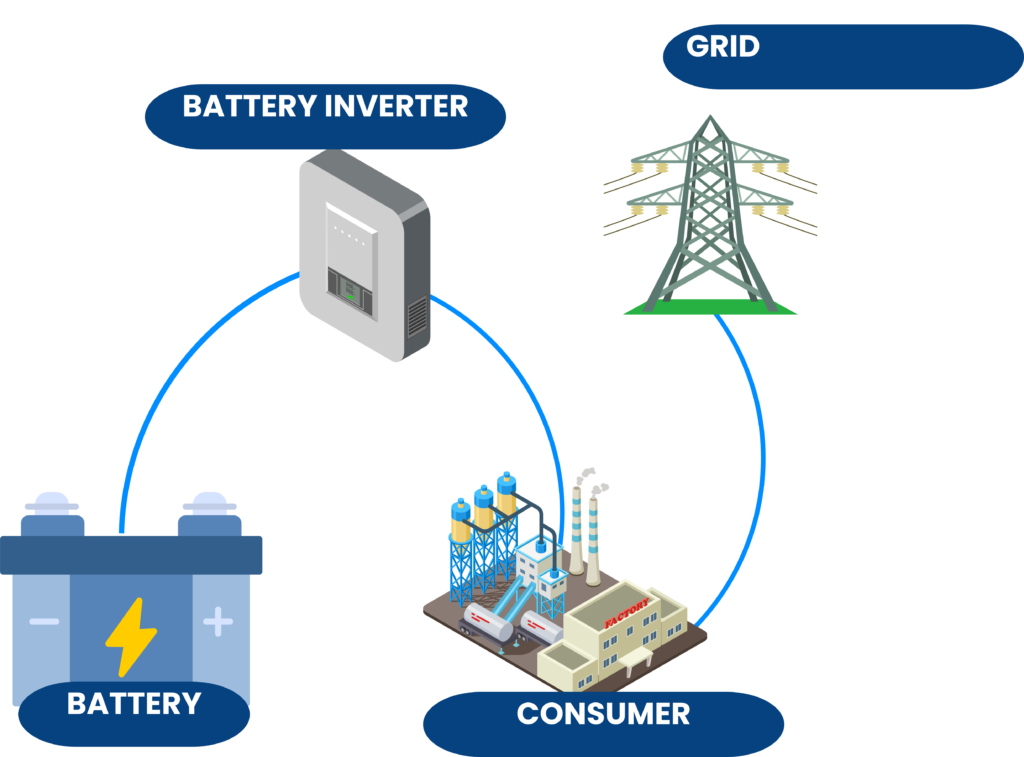
ENERGY STORAGE SYSTEM
Key Components in an Energy Storage System and How They Work
As the world transitions towards more sustainable energy solutions, understanding how energy storage systems operate is crucial. Battery Energy Storage Systems (BESS) are at the forefront of this shift, offering a way to store and manage electrical energy efficiently. But what are the key components of these systems, and how do they work together? Here’s a breakdown of the essential elements in an energy storage system and their functions.
1. Batteries
Function: Batteries are the core component of any energy storage system. They store electrical energy in chemical form and release it when needed.
How They Work: When charging, electrical energy is converted into chemical energy and stored within the battery. The chemical energy is converted back into electrical energy, during discharge. Different types of batteries, such as lithium-ion, lead-acid, and flow batteries, offer various benefits in terms of efficiency, capacity, and lifespan.
2. Inverter
Function: The inverter is responsible for converting the direct current (DC) electricity stored in the batteries. Into alternating current (AC) electricity, which is used by most household appliances and the grid.
How It Works: The inverter takes the DC power from the batteries and transforms it into AC power, making it compatible with the electrical grid and home appliances. Some systems also include a bidirectional inverter, which can convert AC power from the grid into DC for charging the batteries.
3. Battery Management System (BMS)
Function: The Battery Management System oversees the health and performance of the batteries. It ensures the safe and efficient operation of the energy storage system.
How It Works: The BMS monitors key parameters such as voltage, current, and temperature. It balances the charge across individual cells to prevent overcharging or deep discharging, which can damage the batteries. Additionally, it provides diagnostic information and manages battery safety.
4. Energy Management System (EMS)
Function: The Energy Management System controls the overall operation of the energy storage system, optimizing its performance based on energy needs and usage patterns.
How It Works: The EMS manages the charging and discharging cycles of the batteries, integrates with renewable energy sources, and adjusts energy flows to maximize efficiency. It can be programmed to prioritize energy usage based on cost, demand, or other factors.
5. Charge Controller
Function: The charge controller regulates the power going into and coming out of the batteries, ensuring they are charged properly and not overcharged.
How It Works: It manages the voltage and current to protect the batteries from damage. The charge controller ensures that the batteries receive the optimal amount of power during charging and prevents excessive discharge that could reduce battery life.
6. Thermal Management System
Function: The thermal management system maintains the optimal operating temperature for the batteries and other components.
How It Works: It uses cooling or heating mechanisms to regulate the temperature of the batteries and inverters. Proper temperature control is essential for maintaining battery performance and longevity, as extreme temperatures can affect efficiency and safety.
7. Monitoring and Communication System
Function: This system allows users to monitor the performance and status of the energy storage system remotely.
How It Works: It provides real-time data on energy usage, battery health, and system performance through a user interface or mobile app. This system also facilitates communication with utility providers or grid operators, enabling smart grid interactions.
Conclusion
Understanding the key components of an energy storage system and how they work together is essential for optimizing energy management. From batteries that store power to inverters that convert it, each component plays a vital role in ensuring efficient and reliable energy storage. As technology advances, these systems continue to improve, offering greater efficiency, capacity, and integration with renewable energy sources. Investing in a well-designed energy storage system can provide significant benefits, including cost savings, energy reliability, and sustainability.